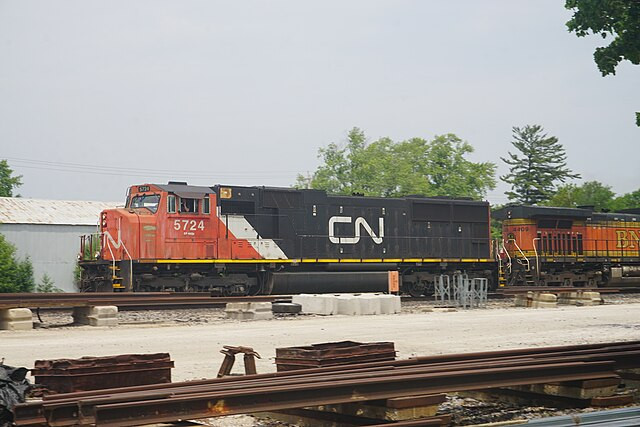The U.S.-Canada trade corridor, a vital artery for the North American economy, has been paralyzed following a labor dispute that led to the lockout of over 9,000 freight rail workers by Canada's two major rail companies, Canadian National Railway (CN) and Canadian Pacific Kansas City (CPKC). The shutdown, which affects billions of dollars in trade, could have increasingly severe economic repercussions if not resolved swiftly.
The impasse began when the Teamsters Canada Rail Conference, representing the rail workers, failed to reach new labor agreements with CN and CPKC after months of negotiations. As a result, all rail traffic in Canada and across the U.S.-Canada border has come to a halt. This disruption has stranded goods worth approximately $572 million in daily container trade from Canada to the U.S., which accounts for 14% of the total bilateral trade between the two nations for the first half of 2024.
The implications of this shutdown are far-reaching, impacting a wide range of industries from automotive to retail. Major U.S. companies like Ford, General Motors, Walmart, and Dow Chemical rely heavily on rail transport to move essential goods across the border. According to Steve Lamar, President and CEO of the American Apparel & Footwear Association, "Rail is an essential part of the ecosystem that helps you get dressed every day. A work stoppage comes at a critical time for back-to-school and just at the start of the holiday inventory rush."
The situation has prompted ocean carriers and U.S. rail companies to implement contingency plans. Hapag-Lloyd, for instance, introduced a $350 per Bill of Lading diversion fee for imports originally destined for Canadian ports with U.S. inland delivery. Meanwhile, Maersk, Norfolk Southern, and CMA CGM have adjusted their business strategies, including rerouting vessels to U.S. ports and restricting certain rail shipments.
The chemical industry, which accounts for significant cross-border trade, is particularly vulnerable. Rob McRae, Vice President of Transportation for Univar Solutions, highlighted that the U.S. exported $28.5 billion in chemicals to Canada in 2023. He warned that the rail shutdown could have "massive downstream impacts" on supply chains, affecting products ranging from household cleaners to personal care items.
The labor dispute centers on issues such as worker shifts, rest periods, and overall working conditions. François Laporte, President of Teamsters Canada, criticized the rail companies for forcing a lockout, accusing them of not negotiating in good faith. "The decision to stop the operation and take the economy hostage was not ours. It's the decision of the railway companies," Laporte told CNBC, emphasizing the union's willingness to resume talks at any time.
On the other side, CN defended its decision, stating that it had negotiated in good faith for nine months and proposed substantial offers, including better pay and improved working conditions. The company expressed frustration at the lack of urgency from the union to reach an agreement, leading to the lockout as a measure to protect its operations and the broader economy.
The Canadian government, under Prime Minister Justin Trudeau, faces mounting pressure to intervene. While Trudeau has so far resisted calls for compulsory arbitration, he urged both sides to reach a resolution, noting the significant economic damage that a prolonged shutdown could cause. "Millions of Canadians, workers, farmers, and businesses across the country are counting on both sides to do the work and get to a resolution," Trudeau said.
The impact of the rail shutdown is already being felt, with potential ripple effects across various sectors. Logistics experts warn that prolonged disruptions could lead to a backlog of shipments, further straining supply chains already under pressure from recent global events. Paul Bingham, Director of Transportation Consulting at S&P Global Market Intelligence, noted that even a brief disruption could have long-term consequences, as the recovery process for the transportation system and supply chains would be slow and costly.
As the standoff continues, the stakes are high for both the Canadian and U.S. economies. With $277 billion worth of goods moving annually on Canada's railways and 75% of all exports heading to the U.S., the resolution of this labor dispute is critical to avoiding severe economic fallout. The next few days will be crucial in determining whether a swift resolution can be achieved or if the shutdown will escalate into a major economic crisis.






